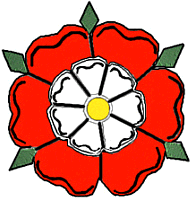BAMAD no. 74
Brit-Am Anthropology and DNA Update
28 March 2010 24 Nissan 5770
Contents:
1. Amorite (possible Israelite- Manasseh?) mt [female-transmitted] DNA K
(a) First Account: Amorite DNA K
(b) Second Account: Anthropological analysis of the osteological material from an ancient tomb (Early Bronze Age) from the middle Euphrates valley, Terqa (Syria)
2. MtK Common amongst Ashkenazi Jewesses, Druzes, and British Women
3. Jewish Genes a Blessing and not such a Blessing?
|
Brit-Am Discussion Group |
Contents by Subject |
Research Recognition Reconciliation Contribute |
|
Site Map Contents in Alphabetical Order |
This Site |
1. Amorite (possible Israelite- Manasseh?) mt [female-transmitted] DNA K
(a) First Account:
Amorite DNA K
http://dna-forums.com/index.php?/
blog/2/entry-42-amorite-mtdna-k/
04 February 2010
We have pitifully little ancient DNA from the Near East. So a new study is more than welcome, even though only one mtDNA haplogroup was extracted. J. Tomczyk and his Polish colleagues investigated an interesting Early Bronze Age tomb at Terqa, on the west bank of the Middle Euphrates.
The tomb was carefully built of stone, and a mass of pottery was left with the two people interred - a man and a woman. So who were they? Clearly they had a high status among their community.
Terqa was presumably founded by the Amorite tribes around 3000 BC. It was of the same culture as its powerful neighbour, the Amorite town of Mari (Tell Hariri), which controlled the trade route along the Euphrates. The Amorites spoke a Semitic language related to modern Hebrew. They adopted cuneiform writing from southern Mesopotamia and left records in their own language.
The male skeleton in the tomb was of a man 45?50 years old. He was tall (about 179 cm) and heavily muscled. The bronze parts of a coat and belt, together with bronze weapon-blades were found beside him. So he may have been a warrior. Unfortunately his aDNA could not be extracted.
The female yielded mtDNA haplogroup K. She was about 40?44 years old and bore signs of overweight. Obesity is another clue that these were high-status individuals, for most people of the time worked too hard to have any surplus intake of calories.
J. Tomczyk et al., Anthropological analysis of the osteological material from an ancient tomb (Early Bronze Age) from the middle Euphrates valley, Terqa (Syria), International Journal of Osteoarchaeology, online before print.
(b) Second Account:
http://www3.interscience.wiley
.com/journal/123269018/
abstract?CRETRY=1&SRETRY=0
Anthropological analysis of the osteological material from an ancient tomb (Early Bronze Age) from the middle Euphrates valley, Terqa (Syria)
J. Tomczyk 1 *, K. Jdrychowska-Daska 2, T. Poszaj 2, H. W. Witas 2
1Institute of Ecology and Bioethic, Department of Anthropology, Cardinal Stefan Wyszynski University, Warsaw, Poland, ul. W?cickiego 1/3, Warsaw 01-938, Poland
2Molecular Biology Department, Medical University of Lodz, Lodz, Poland
email: J. Tomczyk (jaktom@post.pl)
*Correspondence to J. Tomczyk, Institute of Ecology and Bioethic, Department of Anthropology, Cardinal Stefan Wyszynski University, Warsaw, Poland, ul. W?cickiego 1/3, Warsaw 01-938, Poland.
Abstract
Terqa, situated on the right bank of the Middle Euphrates, is known to have been a site already in the third and second millennium BC. Excavations which take place in this region aim to provide answers for numerous significant issues connected with the origins of human civilisation. In 2008 season we found a tomb dated 2650-2450 BC, consisting of two chambers with stone domes. The smaller chamber contained many luxury grave goods. The other one was bigger and contained human skeletons.
The first skeleton belonged to a man, 45/50 years old. It is extremely heavy and large. On the right humerus, near the proximal edge, we found two cuts. The healed edges of the wound suggest that the man from Terqa survived after the wound was inflicted. Many muscular attachments were clearly marked on the bones and bone robustness was far above the average, which may suggest that the skeleton belonged to a warrior. These observations correspond to the fact that the bronze part of a belt together with bronze weapon-blades was found on the right side of the hip.
The second skeleton, which belonged to a female who was about 40/44 years old, was found in an anatomical position. The chamber also contained an almost complete skeleton of a sheep. The morphology of the forearm of the female suggested strenuous activity. From this skeleton was successfully isolated HVR1 fragment. The main mutation indicated that the analysed mtDNA belonged to haplogroup K.
2. MtK Common amongst Ashkenazi Jewesses, Druzes, and British Women
Haplogroup K (mtDNA)
http://en.wikipedia.org/wiki/Haplogroup_K_(mtDNA)
Haplogroup K represents a sizeable fraction of the Western Eurasian genetic pool. In Europe, it is particularly common around the Alps and the British Isles. It is found in lesser frequency in North Africa, the Middle East and South Asia. Approximately 32% of the haplotypes of modern people with Ashkenazi Jewish ancestry are in haplogroup K. This high percentage points to a genetic bottleneck occurring some 100 generations ago and likely due to low admixture with non-Jewish populations.[5]
Other Non-Jewish populations with large representation of Haplogroup K are the Druze of Syria, Lebanon, Israel, and Jordan, of which 16% belong to haplogroup K. In the British Isles over 10% of the population belongs to K. It was also found that a significant group of Palestinian Arabs belonged to K[6]. The general European population has about of 6% of its members in Haplogroup K[7]. Though, with such a large population to draw from (more than 400 million), a mere 6% of Europeans in K far outstrips the number of Ashkenazi Jews represented in K by a factor greater than 10 to 1.
http://www.jogg.info/11/coffman.htm
According to Behar (2004a), only four mtDNA groups account for approximately 70% of Ashkenazi mtDNA results. These haplogroups are K (32%), H (21%), N1b (10%) and J1 (7%).
Human mitochondrial DNA haplogroup
http://en.wikipedia.org/wiki/
Human_mitochondrial_DNA_haplogroup
However Balloux et al. (2009) have shown that mtDNA also correlates with climate and that temperature-based natural selection has helped shape global mtDNA patterns[1] so that the assumption of pure genetic drift may be incorrect.
The letter names of the haplogroups run from A to Z. As haplogroups were named in the order of their discovery, they do not reflect the actual genetic relationships.
3. Jewish Genes a Blessing and not such a Blessing?
JewgenicsJewish intelligence, Jewish genes, and Jewish values.
By William SaletanPosted Thursday, Nov. 1, 2007, at 7:54 AM ET
http://www.slate.com/id/2177228/
Extracts:
Entine laid out the data. The average IQ of Ashkenazi Jews is 107 to 115, well above the human average of 100. ...
The theory still sounds arrogant, until you hear the IQ machine's possible costs. Some scholars now hypothesize that the genes that make Jews smart also give some of them nasty diseases such as Tay-Sachs. Entine finds this plausible. He pointed out that some genes associated with brain growth are also associated with breast cancer, including in his own family. During the question-and-answer session, someone brought up another tradeoff: Supposedly, Jews are deficient in visio-spatial skills, possibly because their brains allot extra space for verbal intelligence. That might explain the average Ashkenazi Jewish score of 122 on verbal IQ tests.

Pleased with what you read?
Click Here to make an offering. |
'It is impossible to rightly govern the world without God or the Bible.'
George Washington
Brit-Am is the "still small voice" that contains the truth.
[1-Kings 19:12] AND AFTER THE EARTHQUAKE A FIRE; BUT THE LORD WAS NOT IN THE FIRE: AND AFTER THE FIRE A STILL SMALL VOICE.
| PREVIOUS ISSUES |
 |
 |
